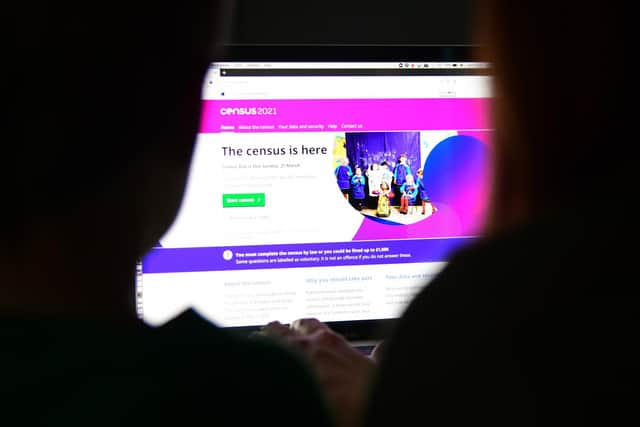Census reveals Blyth, Ashington, Newbiggin, Bedlington Station and Sleekburn are Northumberland's most deprived areas
and live on Freeview channel 276
The deprivation table is based on the latest 2021 census results, a snapshot of England and Wales which was captured in March last year.
As part of the survey, households were classified in terms of four different "dimensions of deprivation", which are based on certain characteristics.
Advertisement
Hide AdAdvertisement
Hide AdThe first is where any member of a household, who is not a full-time student, is either unemployed or long-term sick, and the second covers households where no person has at least five or more GCSE passes or equivalent qualifications, and no 16 to 18-year-olds at the home are full-time students.


The third dimension is where any person in the household has general health that is “bad” or “very bad” or has a long-term health problem, and the fourth where the household’s accommodation is either overcrowded or is in a shared dwelling, or has no central heating.
Office for National Statistics data show 51.5% of households in Northumberland were deprived in at least one of these "dimensions" when the most recent census was carried out.
It meant the area was largely in line with the average across England and Wales, of 51.7%. It also represented a drop from 56.4% at the time of the last census in 2011.
Advertisement
Hide AdAdvertisement
Hide AdA further breakdown reveals which of the area's 38 neighbourhoods were most affected by deprivation last year.
In Northumberland, the five areas with the highest deprivation rates were:
1) Blyth Cowpen – 68.5% of households here were deprived in at least one dimension at the time of the 2021 census, down from 75.2% in 2011;
2) Ashington Hirst – 64.9%, falling from 70% in 2011;
3) Blyth Isabella – 64.8%, a drop from 69.9% in 2011;
4) Newbiggin – 64.3%, down from 68.3% in 2011;
5) Bedlington Station and Sleekburn – 59.2%, down from 64.7% in 2011.
Advertisement
Hide AdAdvertisement
Hide AdBy contrast, the areas with the lowest level of deprivation were Longhorsley, Hepscott and Capheaton, at 36.2% of households.
The ONS said deprivation was a "complex topic", adding that more detailed information would come in future releases.
Ian Lavery, Labour MP for Wansbeck, said: “I am somewhat surprised to hear that deprivation has gone down over the past 10 years given the rapid rise in child poverty in our region that has been well documented by the North East Child Poverty Commission amongst others.
“These figures should therefore need to be inspected closer. They do not account for widening inequalities across communities or age groups for example, and the measurement of deprivation may not capture the full story, especially since many of the metrics are self-reported.
Advertisement
Hide AdAdvertisement
Hide Ad“For example, unemployment levels are an unreliable indicator of deprivation when wages are so low in the North East, with rising numbers of people in in-work poverty, and continue to lag behind inflation.
“Nevertheless the figures remain far too high are much more needs to be done to bring them down. A decade of austerity and cuts has battered these communities and sadly it appears more of the same is on the way while this government is in power.”
Ian Levy, Conservative MP for Blyth Valley, said: "Whilst I am happy to see that situation is improving in the Blyth Cowpen and Isabella wards I am only too aware that there is much still to do.
"Many areas in Blyth Valley have been left behind for decades and I am working with government and the council to attract new jobs to the area and supporting this with improving skills and education to ensure that local people are equipped to take these jobs, bringing more opportunity to Blyth Valley and improving prosperity.
Advertisement
Hide AdAdvertisement
Hide Ad"I do all I can to support local groups like Forget Me Nots in Cowpen and the Isabella Heap group who do fantastic work in their communities, and I am a member of the All-Party Parliamentary Group for Left Behind Areas which shares best practise and searches for solutions to these long-term problems.
"There is no doubt there are tough times ahead in the short term and although these longer term changes take time to make a difference I am optimistic we will see continued improvement."